
Daytona USA is an arcade racing game developed by Sega AM2 and published by Sega in March 1994. Inspired by the popularity of the NASCAR motor racing series in the US, the game has players race stock cars on one of three courses. It was the first game to be released on the Sega Model 2 arcade system board. Daytona USA is one of the highest-grossing arcade games of all time.

Speed Busters is a video game developed by Ubisoft's Montreal studio for Microsoft Windows in 1998. It was released for the Dreamcast in 1999 as Speed Devils. It is a racing game in which the courses feature hazards such as dinosaurs rolling boulders, and UFOs in exotic locales including Louisiana, Louisiana Tornado, New York City, New York City Winter, Mexico, Nevada, Aspen Summer, Aspen Winter, Canada, Canada Light Winter, Canada Heavy Winter, Montreal Industrial, Hollywood, and Hollywood Disaster. The console version's career mode allowed the player to rise themselves through the ranks of a fictional racing league. Colourful rivals challenge the player to accomplish certain feats during races, making accompanying bets using prize money from competition. Money earned from gambling and performance is used to buy cars, upgrade them, and maintain them. The game also supports five players on one Dreamcast console.

4x4 Evo is a video game developed by Terminal Reality for the Windows, Macintosh, Sega Dreamcast, and PlayStation 2 platforms. It is one of the first console games to have cross-platform online play where Dreamcast, Macintosh, and Windows versions of the game appear online at the same time. The game can use maps created by users to download onto a hard drive as well as a Dreamcast VMU. All versions of the game are similar in quality and gameplay although the online systems feature a mode to customize the players' own truck and use it online. The game is still online-capable on all systems except for PlayStation 2. This was Terminal Reality's only video game to be released for the Dreamcast.

Moto Racer, mislabeled as Moto Racer Gold, is an arcade style motorcycle racing game developed by Delphine Software International and published by Electronic Arts for Microsoft Windows and PlayStation. The game was originally to be published by BMG Interactive, but after BMG closed down its U.S. operations it sold the publication rights to Electronic Arts. Critics hailed the game as the first outstanding arcade-style racer to appear on PC, and the PlayStation version in turn was called a strong conversion in reviews.
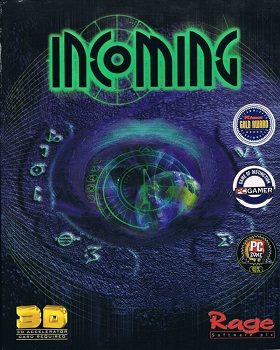
Incoming is a 3D shooter video game developed and published by Rage Software. The game was first released for Microsoft Windows in mid-1998, and was followed by a Sega Dreamcast version, which was released in Japan on December 17, 1998, in Europe on October 14, 1999, and in North America on September 15, 1999. Set in the near-future of 2009, the game primarily revolves around controlling vehicles and turrets to fight alien invaders of Earth in one of the campaign modes, the arcade mode, and with or against another player. Some levels include brief real-time strategy segments.

Juiced is a racing video game by British studio Juice Games for Microsoft Windows, PlayStation 2, Xbox, and mobile phones. The game was delayed for release in 2004 because the original publisher, Acclaim Entertainment, went defunct. Juice Games and Fund 4 Games retained ownership of the property and sold the game to THQ, who funded the project for a further six months of improvements. In early 2006, British software publisher Focus Multimedia re-released the PC version of Juiced at a new budget price as part of its "Essential" games series. The game offers different modes including career and arcade that present the player with challenges of increasing difficulty. The player can customise the car to suit their style and unlock new ones in arcade mode. The game features nitrous boosts, similar to that of other racing games. Juiced went to number one in the United Kingdom MCV sales charts and its first version sold 2.5 million units.

NASCAR Racing 3 is a racing simulator produced by Papyrus Design Group and published by Sierra Sports for Microsoft Windows in 1999.

Hydro Thunder is an inshore powerboat racing video game, originally an arcade game in February 1999 and later released for the Sega Dreamcast as a launch title later that year. It was also released for PlayStation and Nintendo 64 in early 2000. This game is part of Midway's Thunder series of racing games, which includes Offroad Thunder, 4 Wheel Thunder, and Arctic Thunder. Hydro Thunder Hurricane, a sequel to Hydro Thunder, was later released for the Xbox 360 on July 27, 2010 on Xbox Live Arcade.

TrickStyle is a futuristic racing video game developed by Criterion Games and published by Acclaim Entertainment for the Dreamcast and Microsoft Windows. Set in the future, the player takes part in stunt-filled hoverboard races through London, Tokyo, and Manhattan, or inside a massive arena called the Velodrome. AirBlade by Criterion and Namco is a spiritual successor. The game received mixed reviews from critics, who praised its graphics and physics, but criticized its gameplay, animations and sound.
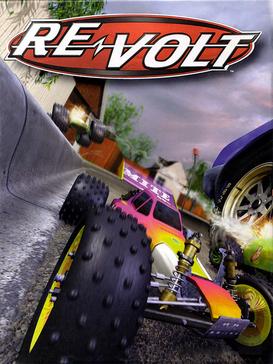
Re-Volt is a racing video game designed by Paul Phippen and Simon Harrison. It was developed by Acclaim Studios London and published by Acclaim Entertainment for Microsoft Windows, Nintendo 64, PlayStation and Dreamcast.
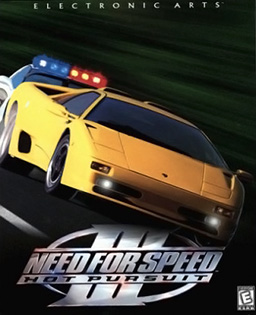
Need for Speed III: Hot Pursuit is a 1998 racing video game developed for PlayStation by EA Canada and Microsoft Windows by EA Seattle, and published by Electronic Arts. It is the third major installment in the Need for Speed franchise, incorporating police pursuits as a major part of gameplay. Hot Pursuit remains focused on racing using exotic sports cars, but features races that primarily take place in locations within North America, including varied settings and climates. Police AI is improved over the first game, utilizing several tactics to stop both the player and opponent. The PlayStation version was released on March 25, 1998, while the Windows version was released on October 12 the same year. The game received critical success, with praise for its graphics and customization options. It received a direct sequel in 2002 and a reboot in 2010.

South Park Rally is a 2000 kart-style racing video game based on the American animated sitcom South Park published by Acclaim Entertainment and released for the PlayStation, Microsoft Windows, Nintendo 64, and Dreamcast. Gameplay follows the player in a competitive racing championship set in the fictional town of South Park. Players are given the options for multiplayer, arcade, or championship modes, but only the championship unlocks extra features. Competition begins in South Park's 1st Rally, a circuit race around four checkpoints in the downtown area of South Park. Races get gradually more diverse, with more locations, racers, and elements added as the game progresses.
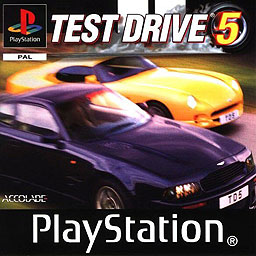
Test Drive 5 is a racing game developed by Pitbull Syndicate and published by Accolade for PlayStation and Microsoft Windows in 1998.

Test Drive 6 is a racing video game developed by Pitbull Syndicate for PlayStation, Microsoft Windows and Dreamcast. In the United States the game was published by Infogrames North America, while in Europe the game was published by Cryo Interactive. The game featured 37 licensed cars, plus four police car variants. As a first for the series, cars from General Motors are not playable in this game, instead they appear as traffic cars. The soundtrack featured industrial rock and techno music from artists such as Fear Factory, Lunatic Calm and Cirrus.
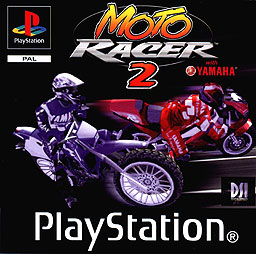
Moto Racer 2 is a motocross racing game developed by Delphine and published by Electronic Arts for PlayStation and Microsoft Windows. It is part of the Moto Racer series, and is the sequel to Moto Racer.

Ballistics is a futuristic racing computer game developed by Grin and published by Xicat Interactive in 2001. Grin developed an arcade version of the game, released in 2002 featuring a unique reclined seating position cabinet by Triotech. Players race across seven different tracks in various leagues against other competitors on high-speed hoverbikes.

Rollcage Stage II is a racing video game developed by Attention to Detail for PlayStation and Microsoft Windows. It is the sequel to Rollcage. On top of the basic racing concept, the cars can be equipped with weapons, which are picked up on the track as bonuses, which can be used against competing cars. The automobiles themselves, once again, have wheels that are larger than the body of the car thus creating a car that has no up or down and therefore can be flipped yet continue to drive.

Hot Wheels Micro Racers is a racing video game developed by Unique Development Studios (UDS) and published by Mattel Interactive for Microsoft Windows. The game is based on the Hot Wheels toyline, and was unveiled at the American International Toy Fair in February 2000, as a competitor to Micro Machines. Hot Wheels Micro Racers was released on April 28, 2000, and came packaged with a free Hot Wheels car and poster.

Beetle Crazy Cup, released in North America as Beetle Buggin', is a 2000 racing video game developed by Xpiral and published by Infogrames for Microsoft Windows. The game features vehicles by Volkswagen as part of a licensing deal between Infogrames and the automotive company.

Official Formula 1 Racing is a racing game developed by Lankhor and published by Eidos Interactive in 1999. A sequel to the game, called F1 World Grand Prix, was released in 1999–2000.




















